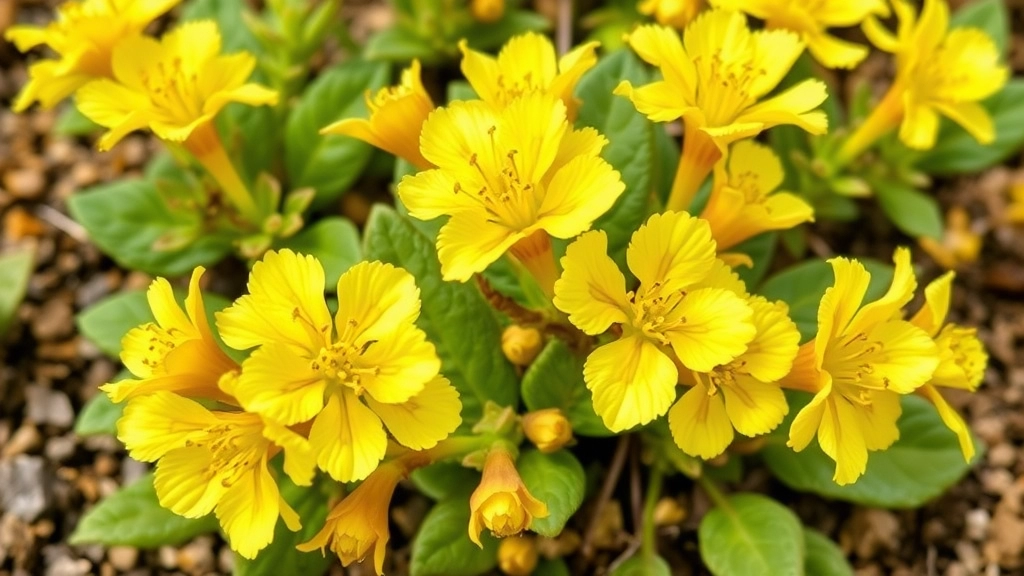Yellow Kalanchoe Blossfeldiana Care Guide
Yellow Kalanchoe Blossfeldiana is a vibrant succulent known for its long-lasting blooms and easy care. If you’re looking to make the most of this beautiful plant, understanding its characteristics and optimal growing conditions is key. Whether you’re a seasoned gardener or just starting out, I’ll guide you through the essentials to keep your Yellow Kalanchoe Blossfeldiana thriving.
From proper lighting and watering techniques to soil preferences and fertilization tips, I’ve got you covered. We’ll also delve into how to prolong the blooming period, effective deadheading techniques, and the best methods for propagation. Ready to master the art of caring for your Yellow Kalanchoe Blossfeldiana? Let’s dive in!
Have you ever wondered what makes the Yellow Kalanchoe Blossfeldiana such a popular choice among plant enthusiasts?
This vibrant succulent is not just a feast for the eyes; it has a unique set of characteristics that make it stand out in any garden or indoor space.
Key Features:
– **Bright Yellow Blooms:** The most striking feature is its cheerful yellow flowers, which bloom in clusters, creating a stunning display.
– **Succulent Leaves:** Its fleshy, green leaves store water, making it drought-tolerant and easy to care for.
– **Compact Growth Habit:** Typically growing between 12 to 18 inches tall, it fits perfectly in small spaces or as part of a larger arrangement.
– **Long Blooming Period:** With the right care, these plants can bloom multiple times a year, bringing continuous colour to your home.
– **Toxicity:** It’s important to note that Kalanchoe is mildly toxic to pets if ingested, so keep it out of reach of curious animals.
These characteristics make the Yellow Kalanchoe Blossfeldiana not just an ornamental plant, but also a resilient companion that can thrive in various conditions. For more information on how to care for this beautiful plant, check out the [care guide for Yellow Florist Kalanchoe Blossfeldiana](https://planthq.org/care-guide-for-yellow-florist-kalanchoe-blossfeldiana/).
Additionally, if you are interested in exploring other varieties, you might find our [comprehensive pink Kalanchoe plant care guide](https://planthq.org/comprehensive-pink-kalanchoe-plant-care-guide/) helpful.
Optimal Growing Conditions for Kalanchoe Blossfeldiana
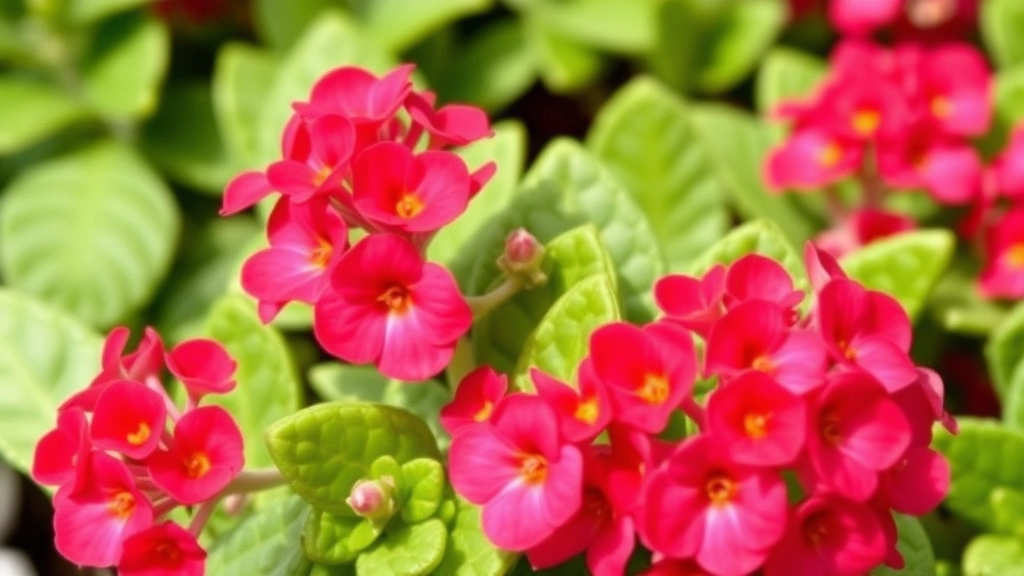
So, you’ve got your eye on that vibrant Yellow Kalanchoe Blossfeldiana, and you’re wondering: what’s the secret to keeping it happy and thriving?
First off, let’s talk temperature. Kalanchoe loves warmth. Aim for a cozy range between 20°C to 25°C during the day, and a slightly cooler 10°C to 15°C at night.
Humidity Matters
These beauties prefer lower humidity levels. If you’re in a humid area, consider placing them in a well-ventilated spot.
Space to Breathe
Kalanchoe Blossfeldiana isn’t a fan of overcrowding. Give it some room to breathe. A pot that’s too small can stunt its growth.
Where to Place It
When it comes to location, think bright and sunny. They thrive in areas with indirect sunlight. A south-facing window is usually perfect.
Quick Tips for Optimal Conditions:
- Temperature: 20°C to 25°C during the day; 10°C to 15°C at night.
- Humidity: Keep it low; good airflow is key.
- Pot Size: Choose a pot that allows room for growth.
- Light: Bright, indirect sunlight is ideal.
By setting up the right environment, you’re well on your way to a flourishing Yellow Kalanchoe.
Light and Watering Requirements
When it comes to growing Yellow Kalanchoe Blossfeldiana, understanding light and watering needs is crucial for its health and vibrancy.
Light Requirements
Kalanchoe Blossfeldiana thrives in bright, indirect sunlight.
- Ideal Conditions:
- A south-facing window is perfect.
- Avoid direct sunlight, as it can scorch the leaves.
- Signs of Insufficient Light:
- Stretched or leggy growth.
- Fading leaf colour.
To ensure your plant gets the right amount of light, consider rotating it every few weeks. This helps all sides receive equal exposure.
Watering Requirements
Watering is another critical factor. Overwatering is a common mistake that can lead to root rot.
- Watering Tips:
- Allow the top inch of soil to dry out before watering again.
- Use room temperature water to avoid shocking the roots.
- Frequency:
- Water every 2-3 weeks during the growing season (spring and summer).
- Reduce frequency in the dormant period (autumn and winter).
Key Takeaways
- Light: Bright, indirect sunlight is essential.
- Water: Water only when the soil is dry to the touch.
For more detailed care instructions, you can refer to our care tips for Kalanchoe succulent with yellow flowers. Additionally, if you’re interested in learning about different varieties, check out our guide on top Kalanchoe succulent varieties and care tips.
Soil Preferences and Drainage Tips
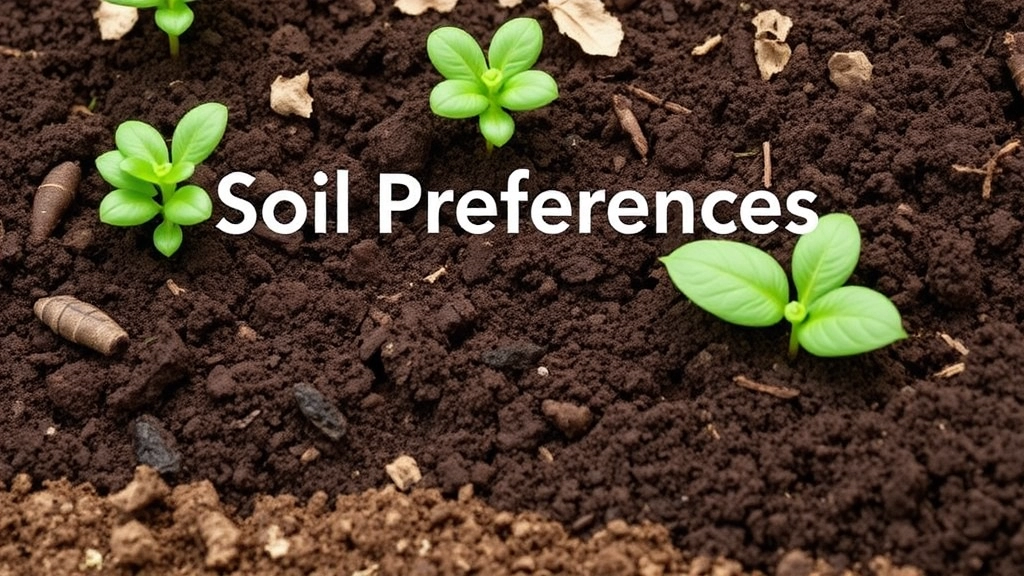
When it comes to cultivating Yellow Kalanchoe Blossfeldiana, selecting the right soil is crucial for ensuring healthy growth. Many plant enthusiasts often worry about the best soil mix to support their Kalanchoe.
Soil Type
- Well-draining soil is essential.
- A cactus or succulent mix is highly recommended.
- You can also create your own mix by combining:
- 50% potting soil
- 25% perlite
- 25% coarse sand
This combination promotes aeration and prevents water retention, which is vital for Kalanchoe.
Drainage Tips
- Ensure your pot has drainage holes. This prevents water from sitting at the bottom.
- Consider using a terracotta pot. It helps wick moisture away from the roots.
- If using plastic pots, add a layer of gravel at the bottom to enhance drainage.
By focusing on these soil preferences and drainage tips, you can create an optimal environment for your Kalanchoe.
When it comes to keeping your Yellow Kalanchoe Blossfeldiana thriving, proper fertilization plays a crucial role. Many plant enthusiasts often wonder how to ensure their Kalanchoe gets the nutrients it needs without overwhelming it.
### Choosing the Right Fertilizer
– **Type**: A balanced, water-soluble fertiliser works best. Look for a formula with equal parts nitrogen, phosphorus, and potassium (N-P-K).
– **Dilution**: Always dilute the fertiliser to half the recommended strength to prevent root burn.
– **Frequency**: Fertilize every 4 to 6 weeks during the growing season (spring and summer). Reduce or stop fertilisation in the fall and winter when the plant enters dormancy.
### Signs Your Kalanchoe Needs Fertilizer
– **Pale Leaves**: If the leaves are losing their vibrant colour, it may be time to feed your plant.
– **Stunted Growth**: A lack of new growth can indicate nutrient deficiency.
### Additional Growth Enhancements
– **Organic Options**: Consider using compost or well-rotted manure as a natural fertiliser. This not only enriches the soil but also improves its structure.
– **Liquid Seaweed**: Adding liquid seaweed to your fertilisation routine can boost overall health and resilience.
– **Calcium Supplement**: If your Kalanchoe shows signs of blossom end rot, a calcium supplement can help.
For more detailed care tips, you might find our [Complete Care Guide for Kalanchoe Blossfeldiana](https://planthq.org/kalanchoe-blossfeldiana-indoor-vs-outdoor-care-guide/) helpful. Additionally, if you’re interested in keeping your plant blooming year-round, check out our [Kalanchoe Bloom Season Tips](https://planthq.org/kalanchoe-bloom-season-tips-for-yearround-flowers/).
How to Prolong Blooming Period
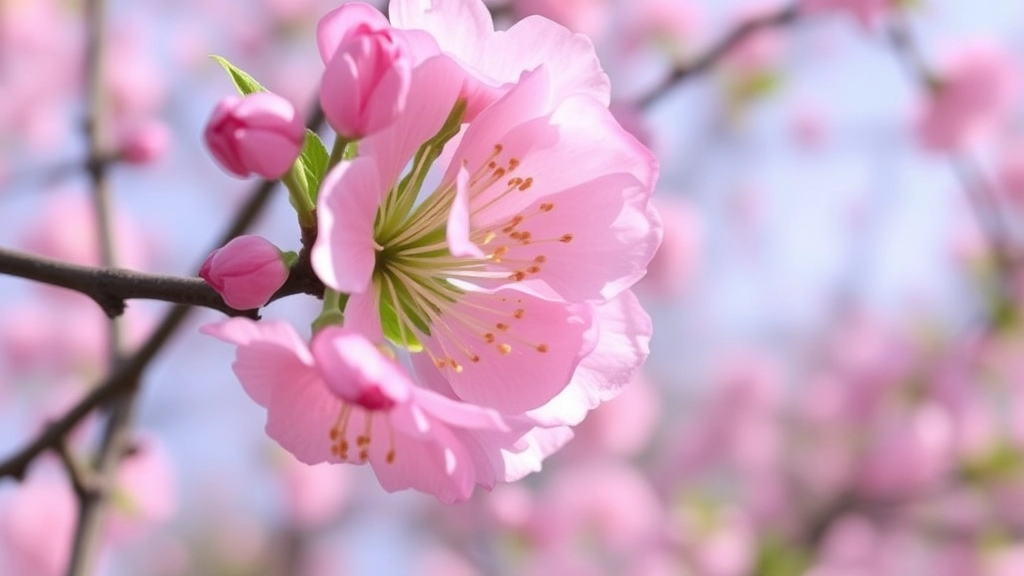
So, you’ve got your stunning Yellow Kalanchoe Blossfeldiana, and you want to keep those vibrant blooms going as long as possible. Who wouldn’t? It’s a real treat to see those cheerful flowers brighten up your space.
Here are some straightforward tips to extend that blooming period:
- Light is Key: Make sure your Kalanchoe gets plenty of bright, indirect sunlight. Too much direct sunlight can scorch the leaves, while too little can stunt blooming. Aim for around 6 hours of light a day.
- Temperature Matters: Keep your plant in a warm environment. Ideal temperatures are between 18-24°C (65-75°F). If it gets too cold, it might drop its flowers early.
- Water Wisely: Overwatering can lead to root rot, which can kill blooms. Water only when the top inch of soil feels dry. This helps keep the plant healthy and encourages more flowers.
- Fertilize Smartly: Use a balanced, water-soluble fertilizer every couple of weeks during the growing season. This gives your plant the nutrients it needs to keep producing those lovely flowers.
- Deadhead Regularly: Snip off spent blooms as soon as they fade. This not only keeps your plant looking tidy but also encourages new growth.
- Stress for Success: Allowing your Kalanchoe to experience a slight drought can actually promote blooming. Just let the soil dry out a bit between waterings.
Deadheading Techniques for Healthier Plants
As we dive deeper into caring for your Yellow Kalanchoe Blossfeldiana, let’s address a common concern: how to keep your plants vibrant and full of life. One effective method is deadheading, which can significantly enhance the overall health and appearance of your Kalanchoe.
What is Deadheading?
Deadheading is the process of removing spent flowers from your plant. This not only tidies up the appearance but also encourages new growth and prolongs blooming.
Benefits of Deadheading:
- Promotes New Blooms: By removing faded flowers, you redirect the plant’s energy toward producing new buds.
- Enhances Aesthetics: Keeping your Kalanchoe looking fresh and vibrant is essential for both indoor and outdoor displays.
- Prevents Seed Formation: This helps the plant focus on growth rather than seed production.
Deadheading Techniques:
- Identify Spent Flowers: Look for flowers that are wilting or have turned brown.
- Use Clean Tools: Always use clean, sharp scissors or pruning shears to prevent disease.
- Cut at the Base: Snip the flower stem just above the first set of healthy leaves. This encourages new growth from the remaining foliage.
- Dispose of Debris: Remove any fallen petals or leaves to prevent pests and diseases.
Frequency of Deadheading:
- Regular Checks: Inspect your Kalanchoe weekly during the blooming season.
- After Each Bloom Cycle: Once a cycle of blooms has faded, perform a thorough deadheading.
For more detailed care tips, check out our Yellow Kalanchoe Blossfeldiana Care Guide and learn how to keep your plant thriving year-round. Additionally, if you’re interested in understanding the optimal bloom times, visit our page on Kalanchoe Flowering Season in Australia.
Pruning and Shaping Kalanchoe Blossfeldiana
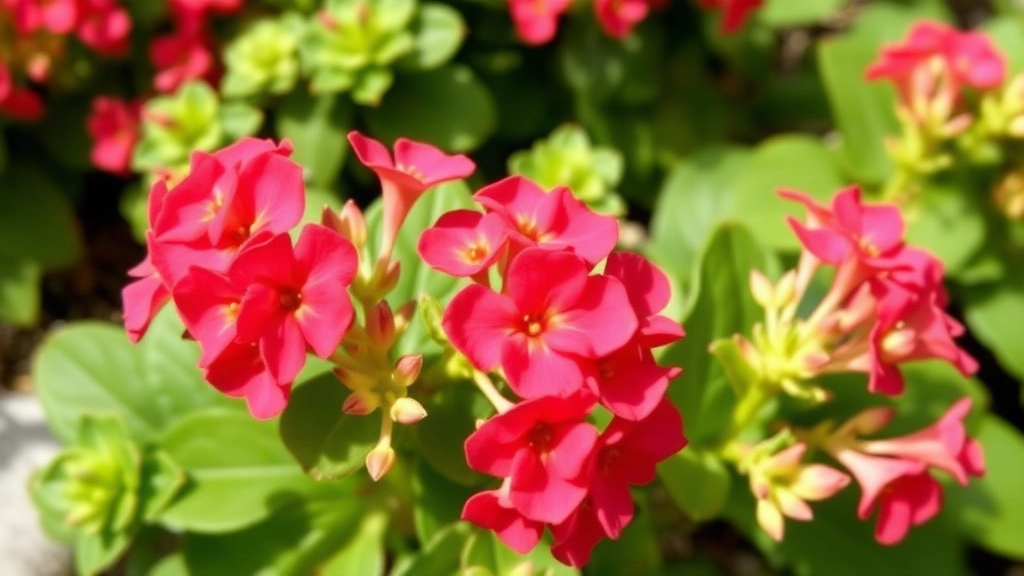
So, you’ve got your Yellow Kalanchoe Blossfeldiana thriving, and now you’re wondering how to keep it in tip-top shape.
Why Prune?
Pruning isn’t just about aesthetics; it’s vital for the health of your plant. It encourages new growth, helps maintain a bushy shape, and removes any dead or unhealthy leaves.
When to Prune:
- Post-Bloom: The best time to prune is right after the blooming period. This gives your plant a chance to recover and prepare for the next cycle.
- Regular Maintenance: A light trim every few months can prevent leggy growth and keep your plant looking lush.
How to Prune:
- Use Clean Tools: Always use sharp, clean scissors or pruning shears. This helps prevent infections.
- Identify the Right Spots: Look for:
- Dead or yellowing leaves
- Stems that are leggy or spindly
- Any overcrowded areas that need thinning out
- Cutting Technique:
- Trim just above a node (the bump where leaves grow) to encourage new growth.
- Remove about a third of the plant if it’s getting too bushy.
Shaping Your Kalanchoe:
- Encourage a Compact Form: If your plant is stretching towards the light, a little pruning can help create a fuller appearance.
- Pinch Tips: Pinching off the tips of new growth can promote branching and a denser plant.
Pro Tip:
After pruning, give your plant a little extra care. A bit of water and light fertilization can help it bounce back quicker.
Step-by-Step Guide to Propagating Yellow Kalanchoe
Are you eager to expand your collection of Yellow Kalanchoe Blossfeldiana? Propagation is a rewarding process that allows you to create new plants from your existing ones. Let’s break down the steps to make it easy for you.
Why Propagate?
Propagation not only gives you more plants but can also help rejuvenate older specimens. Plus, it’s a cost-effective way to enjoy this vibrant beauty around your home.
Step-by-Step Propagation Process
- Choose the Right Time
– Spring or early summer is ideal for propagation.
– This is when the plant is actively growing, ensuring better success rates. - Select Healthy Cuttings
– Look for healthy stems with at least 2-3 leaves.
– Avoid any stems that appear weak or diseased. - Make the Cut
– Use clean, sharp scissors or pruning shears.
– Cut just below a leaf node to encourage root growth. - Let Cuttings Callous
– Place the cuttings in a dry area for 1-2 days.
– This helps the cut surface to callous over, reducing the risk of rot. - Prepare the Soil
– Use a well-draining potting mix, ideally a cactus or succulent blend.
– Ensure the pot has drainage holes. - Plant the Cuttings
– Insert the calloused end of the cutting into the soil, about an inch deep.
– Space them out to allow for growth. - Water Sparingly
– Mist the soil lightly after planting.
– Avoid overwatering; allow the soil to dry out between waterings. - Provide Proper Light
– Place the pot in a bright, indirect light location.
– Too much direct sunlight can scorch the cuttings. - Monitor Growth
– Within a few weeks, you should see new growth.
– This indicates that roots are forming. - Transplanting
– Once the cuttings have grown strong roots, they can be transplanted into larger pots.
– This is usually after 4-6 weeks of growth.
For more tips on how to care for your Kalanchoe Blossfeldiana, check out our Flaming Katy care guide. If you’re interested in exploring other Kalanchoe varieties, our guide to Kalanchoe species is a great resource.
Common Pests and How to Prevent Infestation
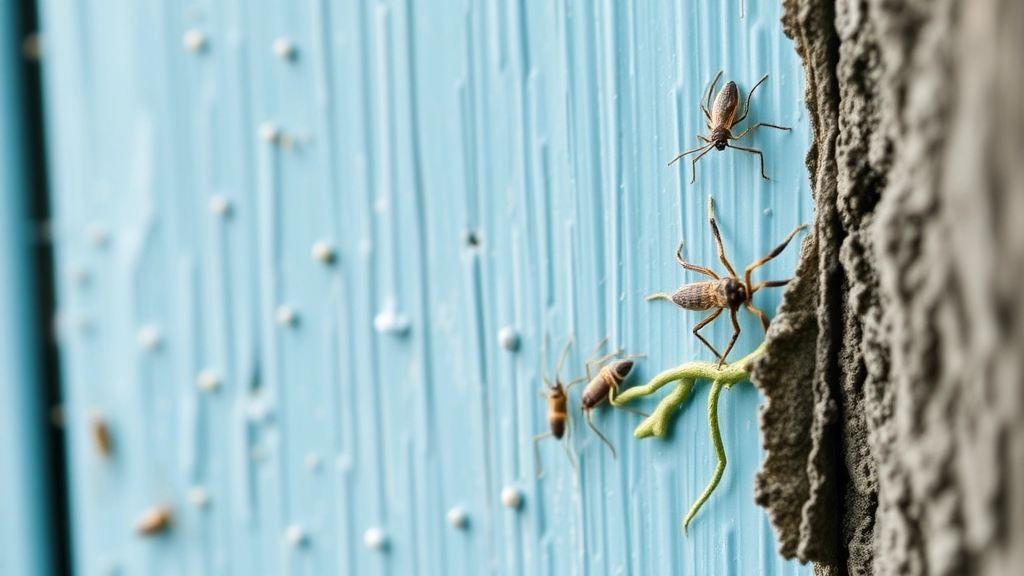
So, you’ve got your beautiful Yellow Kalanchoe Blossfeldiana thriving, but then you notice something off. Maybe tiny spots on the leaves or a sticky residue? That’s a red flag for pests!
Common Pests to Watch Out For
- Mealybugs: These little white fluff balls love to hide in the nooks of your plant.
- Spider Mites: Tiny and sneaky, they create fine webbing that can be hard to spot.
- Aphids: These green or black insects suck the sap right out of your plant.
- Scale Insects: They look like small bumps on the leaves and can be tough to get rid of.
Prevention Tips
- Regular Inspections: Check your plant weekly. Catching pests early can save you a lot of headaches.
- Clean Leaves: Wipe the leaves with a damp cloth to remove dust and any potential pests.
- Quarantine New Plants: If you bring home a new plant, keep it separate for a couple of weeks to ensure it’s pest-free.
- Natural Predators: Introducing ladybugs or lacewings can keep aphids and other pests in check.
Treatment Options
If you do spot pests, don’t panic! Here’s what you can do:
- Neem Oil: A natural pesticide that’s effective against many pests.
- Insecticidal Soap: Safe for your plant and can help eliminate unwanted guests.
- Rubbing Alcohol: Dab a cotton swab in rubbing alcohol and apply it directly to mealybugs or scale.
Dealing with Overwatering and Root Rot
Have you ever noticed your Yellow Kalanchoe Blossfeldiana wilting despite being watered? This common dilemma often stems from overwatering, leading to root rot.
Understanding Overwatering
Overwatering occurs when the soil remains saturated for too long, depriving roots of necessary oxygen. Symptoms include:
- Yellowing leaves
- Wilting despite moisture
- A foul smell from the soil
Identifying Root Rot
Root rot can be a silent killer. To check for this condition:
- Inspect the roots: Gently remove the plant from its pot.
- Look for mushy, dark roots: Healthy roots should be firm and white.
If you find signs of rot, it’s crucial to act swiftly.
Steps to Combat Overwatering and Root Rot
- Stop watering immediately: Allow the soil to dry out completely.
- Remove affected roots: Use sterilized scissors to cut away any rotten sections.
- Re-pot in fresh soil: Choose a well-draining mix, ideally a cactus or succulent blend.
- Ensure proper pot drainage: Use pots with drainage holes to prevent future issues.
Preventive Measures
To avoid overwatering and root rot in the future:
- Water sparingly: Allow the top inch of soil to dry out before watering again.
- Monitor humidity: Keep the plant in a well-ventilated area.
- Use a moisture meter: This can help you gauge when to water.
For more detailed care tips, you might find our post-flowering Kalanchoe care guide helpful. Additionally, understanding the causes and solutions for brown spots on Kalanchoe leaves can provide more insights into maintaining a healthy plant.
How to Encourage Re-blooming in Kalanchoe Blossfeldiana
So, you’ve enjoyed the stunning blooms of your Yellow Kalanchoe Blossfeldiana, but now you’re wondering how to coax those vibrant flowers to return. You’re not alone! Many plant lovers face the same challenge. Let’s dive into some straightforward tips to help your Kalanchoe thrive and bloom again.
FAQs About Yellow Kalanchoe Blossfeldiana
What are the optimal growing conditions for Yellow Kalanchoe Blossfeldiana?
Temperature is key. Aim for 20°C to 25°C during the day and 10°C to 15°C at night. They prefer lower humidity levels and need a pot that allows for room to grow. Place them in bright, indirect sunlight, ideally near a south-facing window.
What type of soil is best for Yellow Kalanchoe Blossfeldiana?
Well-draining soil is essential. A cactus or succulent mix is highly recommended. You can also create your own mix with 50% potting soil, 25% perlite, and 25% coarse sand.
How can I ensure proper drainage for my Kalanchoe?
Ensure your pot has drainage holes to prevent water from sitting at the bottom. Consider using a terracotta pot to wick moisture away from the roots. If using plastic pots, add a layer of gravel at the bottom to enhance drainage.
How can I prolong the blooming period of my Yellow Kalanchoe Blossfeldiana?
Provide plenty of bright, indirect sunlight, maintain a warm environment (18-24°C), water wisely, use a balanced, water-soluble fertilizer during the growing season, deadhead regularly, and allow the soil to dry out slightly between waterings.
When and how should I prune my Yellow Kalanchoe Blossfeldiana?
Prune right after the blooming period and perform light trims every few months for maintenance. Use clean, sharp scissors or pruning shears, and trim just above a node to encourage new growth. Remove dead or yellowing leaves and any leggy or overcrowded stems.
What are common pests and how can I prevent infestations?
Common pests include mealybugs, spider mites, aphids, and scale insects. Regularly inspect your plant, clean the leaves, quarantine new plants, and consider introducing natural predators like ladybugs. If you spot pests, use neem oil, insecticidal soap, or rubbing alcohol to treat the infestation.
References
-
Gardening Know How: Kalanchoe Care â How To Grow A Kalanchoe Plant
-
The Spruce: How to Grow Kalanchoe Plants
-
The Old Farmer’s Almanac: Kalanchoe
